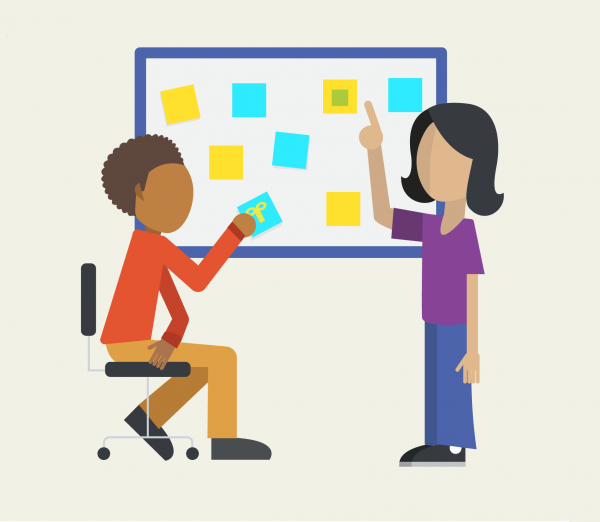
Tools/Materials Required: Story Cards, paper and pencils, Model Magic, HP Sprout and turntable, Laptop, 3D modeling or CAD software, presentation software, 3D printer (optional).
Depth of Knowledge: Strategic Thinking
Teacher’s notes are in purple. For the student’s version, see Five Chairs Student Guide. For the student’s version in Spanish, see Cinco Sillas.
This project works well as a whole class activity with five smaller groups but could also be used for a single individual or small group project.
This activity is grounded in the idea of designing for a specific user and can be a great introduction to human-centered design methodologies. This method is defined by the following five steps:
Empathize ~ Define ~ Ideate ~ Prototype ~ Test
What do these terms mean? How do they apply to designing something for someone? Why is the user important and how is that reflected in this routine?
It is also important to understand that this is a thinking routine and not a process. What is the difference between these two ideas? How do you apply a routine to your work differently than a process?
This video demonstrates this routine being applied by a design team at IDEO, the company that developed this idea of human centered design. What other aspects of their process for solving problems and designing products seem unique or interesting?
Practice using the thinking routine in the Museum of the Mundane project to examine a chair in your classroom or home.
Make a Paper Boat to learn and practice using the Sprout and Capture Stage for 3D scanning and MeshMixer to repair and modify your scanned models.
Design a billboard to make your presentations more engaging. Presentation slides are considered “glance media” and well-designed slides share many elements with billboards.
Read this article on designing better presentations with billboards as a guide and then design your own billboard for something you’ve made in the Learning Studio. (Or something in your backpack, or a favorite toy, etc.) Use Sketchbook or Collage software in the Sprout Workspace or make a PowerPoint slide to design your billboard.
Part 1: Identify Design Principles
Part 2: Rapid Iteration
Part 3: Digitize and Present
Part 4: Reflect
Think about the process you just engaged in. Answer the following questions – first in writing, then discuss with your classmates:
This project is adapted from 5 Chairs Exercise, Stanford d.School K12 Lab Wiki
Produced by Digital Promise Global, with thanks to the Open Educational Resources listed throughout this guide. Distributed to Learning Studios schools as part of HP, Inc. and Microsoft’s Reinvent the Classroom.
This work is licensed under a Creative Commons Attribution-ShareAlike 4.0 International License. You may share this project or modified versions of it under this same license.